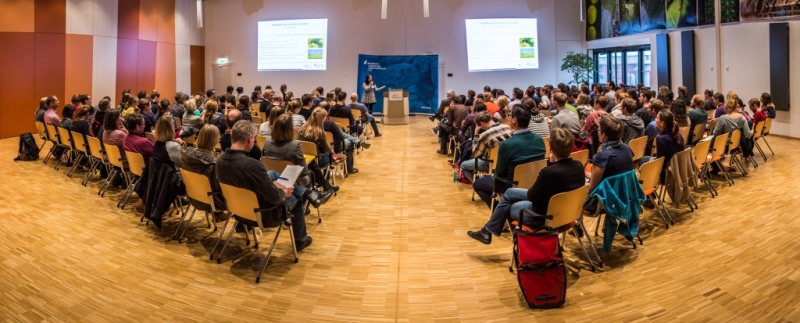
HIGRADE Conference
Starting in 2025, the UFZ Career Day will replace the HIGRADE Conference as an annual highlight - with a clear focus on individual career paths in science, business and society. In addition to practical impulses, the new format will offer targeted support and career planning services. Alongside these content-related offers, the UFZ Career Day will also provide opportunities for networking and individual exchange, thus continuing this important function of the HIGRADE Conference.
The Career Day will take place on October 1, 2025. Further details on the schedule and program topics will follow shortly.
Review: HIGRADE Conference 2024
The conference began with a warm welcome by Prof. Rolf Altenburger, after which about 50 doctoral researchers presented short "pitches" (one-minute speed talks) to more than 200 visitors, inviting them to discuss their dissertation projects at their posters.
Soné Kotze (COMPBC) & Philemon Anuforo (AME) moderated this lively part of the event, which produced some creative contributions. This was followed by the poster session with intense discussions over coffee and cake.
Dr. Daniel Kaping (HIGRADE) moderated the final session, where prizes were awarded for the best posters and the best pitch. The best pitch was awarded as an audience prize. Here, Konstanze Hild (AME) gave a convincing presentation with creative props on "Fungal VOC as Triggers for Prophage Induction". The best posters were selected by a jury. The lucky winners of the book prizes are:
1. Aleksandra Pienkowska (AME): Climate change will increase Cd accumulation in spinach leaves2. Cassandra Uthoff (MOLTOX): The effects of pesticides on the gut-brain axis and phenotypical behaviour of Western honey bee workers (Apis mellifera)
3. Alina Seelig (EAC): Plant uptake of persistent and mobile chemicals
Furthermore, the 46 researchers of the UFZ who successfully completed their doctorate in 2023 were honoured. A special highlight during the session was the lecture & discussion by Prof. Dr. Karsten Rinke on the topic: "It is not all about papers: The pressure, fear, difficulty and EXCITING FUN in communication to non-scientists".
Special thanks go to the UFZ Förderverein, which contributed the book prizes for the best posters and the best pitch. In addition, another virtual applause goes to our musical talents Jana Gaibler and Federica Romanelli who excited us with a spontaneous performance. Furthermore, we would like to thank everyone who made the conference and the subsequent evening programme a successful event!

